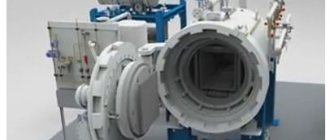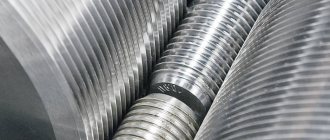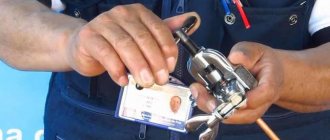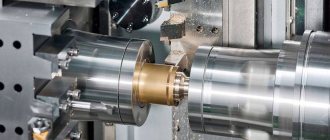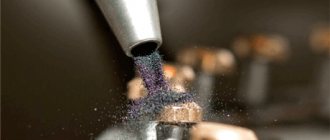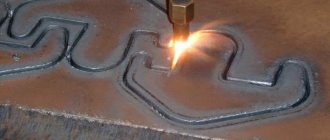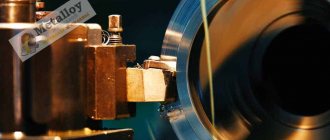To protect steel parts from gas and water corrosion, they are coated with a thin layer of oxidation-resistant metals. The most commonly used for this purpose are zinc and cadmium. Coatings are applied using the electroplating method by passing current through electrolyte solutions.
Cadmium plating of metal is used for protective or decorative purposes. The finished coating has good anti-friction properties and high stability in sea water. The cadmium layer is easily soldered and is not destroyed during machining of the part.
To improve the properties of the coating, the part is immersed in solutions of chromium salts. Chromated cadmium acquires increased durability and a golden hue.
Properties and characteristics of the coating
The thickness of the coating is selected depending on the material and operating conditions. The thinnest layer – from 12 microns – is applied to products that periodically operate in a humid, salty environment. If exposure to vapors or seawater spray is constant, then the coating thickness should be at least 35-40 microns. The parameters of the cadmium layer are regulated by GOST 9.303-84.
The purpose, composition and thickness of the coating are reflected in its marking. For example, “KDkhr-15” means a protective and decorative layer of chromated cadmium with a thickness of 15 microns.
Cadmium plating is used in shipbuilding, energy, mechanical engineering and other fields. In addition to corrosion protection, the coating performs the following tasks:
- seals threaded connections of fasteners;
- facilitates soldering of contacts on steel parts;
- allows you to combine copper contacts with magnesium and aluminum;
- gives the surface a golden hue.
Decorative coatings are used in the manufacture of accessories, furniture, etc. Due to its plasticity, cadmium is used to protect parts that operate under cyclic bending and compression.
The disadvantages of cadmium plating are:
- high price of reagents;
- metal toxicity;
- instability to sulfur compounds contained in petroleum products.
Cadmium plating
Home » Archive library » Other » Cadmium plating All operations that parts undergo before entering the galvanic shop leave traces on their surface in the form of various contaminants.
With a thickness of even thousandths of a micrometer, they sharply reduce the adhesion strength of the coating to the base metal, and as their thickness increases, the adhesion strength drops almost exponentially. The quality of galvanic coatings largely depends on the quality of surface cleaning. Contaminants on the metal surface can be different in nature and properties. Thermal scale, corrosion products, sulfide or oxide films that arise as a result of the interaction of the metal with the environment and are quite firmly bound to it by forces of chemical affinity are removed by etching, during which their chemical bond with the metal is broken. Contaminants in the form of fats, preservative lubricants, residues of polishing pastes, abrasives, cooling emulsions, bound to the metal by adhesive forces, are removed during the degreasing process, which destroys these bonds. The method of cleaning parts from grease contaminants is determined by their nature. Fats of plant or animal origin are practically insoluble in water, but interact with solutions of alkalis or alkali metal salts, forming water-soluble soaps. Fats of mineral origin, which include mineral oils, greases, polishing pastes, etc., also do not dissolve in water. Therefore, to remove them, aqueous solutions of surfactants (surfactants) or special organic solvents are used. 1. Properties, scope and composition of the electrolyte Cadmium plating, unlike galvanizing, cannot be carried out by immersion in molten metal, due to the volatility of cadmium at a temperature of 400 ° C with the release of vapors harmful to health. In an industrial atmosphere, cadmium and cadmium coatings corrode at a rate 1.7-2 times higher than the corrosion rate of zinc and zinc coatings. Despite the fact that cadmium is much more expensive than zinc, thin cadmium coatings are used to protect against corrosion and to give the surface a beautiful appearance to various steel parts in aviation, to protect against sea corrosion, etc. Assemblies made of various metal parts, such as steel and brass, are subjected to cadmium plating , aluminum and stainless steel, etc. in order to prevent or reduce the electromotive force of operating galvanic cells. Electrolytic cadmium plating from cyanide electrolytes came into industrial use about 50 years ago. Subsequently, various brightening agents and methods for subsequent processing of cadmium-plated products were proposed in order to brighten them. The most common cadmium cyanide electrolytes consist of an alkali cadmium cyanide complex, free sodium or potassium cyanide, free alkali and an organic or inorganic additive. The exact composition of the complex has not been established; it is written as NaCd(CN)3 or Na2Cd(CN)4. The electrolyte can be prepared by dissolving cadmium oxide in sodium cyanide so that there is enough free sodium cyanide, adding the necessary additives. Below are approximate electrolyte compositions (g/l) for stationary (I) and drum (II) baths: The higher the cadmium concentration in the electrolyte, the higher the cathode current density. The optimal salt concentration is selected depending on the electrolyte capacity, the frequency of loading and unloading, the shape of the products being coated and the associated amount of electrolyte carried away. Free cyanide plays an important role, which increases the electrical conductivity of the electrolyte and ensures normal dissolution of the anodes. Often the concentration of free cyanide is maintained within the range of 60-75 g/l. The appearance of the coatings to a certain extent depends on the ratio of the total cyanide content to the content of metallic cadmium in the electrolyte, which they try to maintain within the range of 3.71-3.79. The alkali concentration is usually determined by the cadmium oxide introduced into the electrolyte. Its purpose is mainly to increase electrical conductivity, which is especially important when coating products in drums. Excess alkali should be avoided, as this leads to a narrowing of the permissible current densities for obtaining shiny coatings. Brightening agents on both an organic and inorganic basis are introduced into cadmium plating electrolytes. Of the organic brighteners, condensation products of high molecular weight nitrogen-containing compounds, aluminum piperonal and some sulfonic acids deserve attention. Other patented brighteners produce an effect only in electrolytes diluted with cadmium. As the cadmium concentration increases and the current density increases, it becomes more difficult to obtain smooth, shiny coatings—small amounts of inorganic salts must be introduced into the electrolyte. For this purpose, nickel or cobalt salts are used, and nickel in some quantities coprecipitates with cadmium at a low concentration of cadmium and alkali in the electrolyte. Cobalt salts have the same effect as nickel salts, but cobalt does not coprecipitate with cadmium. 2. Electrolysis mode Depending on the composition of the electrolyte, its temperature and the intensity of stirring, current density can be used in the range of 0.5-5 A/dm2. On average, the current density is maintained within the range of 1.5-2 A/dm2 at a concentration of 20 g/l Cd and 3-4 A/dm2 at a concentration of 40 g/l Cd. The anodic current density, which ensures a constant composition of the electrolyte in the usually used mode, should not exceed 2 A/dm2. The temperature is often maintained within 20-35° C, but if necessary it can be increased. Current output varies within 85-98%; More often its values correspond to 90-95%. The current efficiency increases as the concentration of cadmium in the electrolyte increases, the temperature and the intensity of stirring increase. With an increase in the content of cyanide and brightening agent, the current output of the metal decreases slightly, and with an increase in the alkali content, it increases slightly. The anodic current efficiency is almost 100%, except when using excessively high current densities (anodic) and excessively reducing the concentration of free cyanide. The dispersion and covering power of cadmium cyanide electrolytes are of great importance. At a high cadmium content in the electrolyte and a given current density, the dissipative ability decreases with increasing temperature, and at a given temperature, the dissipative ability improves with increasing average current density. Constancy of the dissipative power can only be achieved by increasing the current density in accordance with the increasing temperature. Dissipation ability improves with high free cyanide content in the electrolyte and low metal content. The resistivity of cadmium cyanide electrolytes is low, approximately 5.6 Ohm*cm. Cadmium electrolytes are sensitive to a number of impurities that discolor the coating. The most harmful impurities are thallium, lead, arsenic, antimony, tin, and silver. These impurities can be removed by treating the electrolyte with freshly deposited cadmium sponge or zinc dust, followed by filtration. Electrolysis can also be used at low current densities. Cathode depolarizers (nitrates, chromates) significantly reduce the current yield of the metal. In a diluted electrolyte, 1.6 g/l ΝΟ3 reduces it to 60% without any visible effect, and 40 g/l ΝΟ3 reduces the current efficiency to 30%, and the shine weakens somewhat. Very small amounts of CrO3 cause peeling of the coating, and 0.5; 1.0 and 1.9 g/l CrO3 prevent uniform surface coverage, and the current efficiency from 95% decreases to 85, 22 and 1%, respectively. Poor quality coatings can be removed by immersion in a solution containing 120 g/l ΝΗ4ΝΟ3; coatings can be removed from steel anodicly in a solution containing 90 g/l NaCN and 15 g/l NaOH at 25 ° C and a voltage of about 6 V or in a pyrophosphate solution. As in all cyanide electrolytes, carbonates accumulate in cadmium electrolytes, which are harmless in small concentrations, but as they accumulate they are removed by freezing or by treatment with calcium sulfate. Anodes. Cadmium plating in cyanide electrolytes is carried out using soluble cadmium and insoluble steel anodes. Cast cadmium anodes have the following composition: Cd>99.9%; impurities % no more than: 0.005 Ag+Pb+Sn; 0.0005 As+Sb+Tl. Anodes made from bearing scrap typically contain higher levels of silver and tin, as well as nickel and lead. At high current densities, these impurities cause an uneven course of the cathodic process, and at low densities, sludge is formed, which settles on the surface of the coated products, resulting in a rough, spotty coating. The anodic polarization curves of cadmium in cyanide electrolytes resemble the polarization curves of other metal anodes soluble in cyanide solutions. Initially, the polarization slowly increases to 0.2-0.3 V as the current density increases; the anodes have a normal gray color. Subsequently, with a very slight increase in current density, the polarization increases to 2.6-3.2 V. At this voltage value, the anode has a black powdery or polished shiny appearance; there is a slight release of oxygen. With a further increase in current density, the anode is covered with white salt, the layer of which gradually thickens and abundant release of oxygen begins. In this state, the anode becomes an oxygen electrode and with a further increase in the current density, the polarization increases very slowly. Since we are interested in dissolving cadmium anodes with 100% current efficiency, we can visually regulate the process by the anodic current density (anode surface) and the concentration of free cyanide in the electrolyte so that the anodes have a normal gray color. This must be especially carefully monitored when cadmium plating the internal surfaces of small-diameter tubes or large recesses. The anodic limiting current is highly dependent on the content of free cyanide - the excess over and above the amount associated with the Na2Cd(CN)4 salt. Increasing the free cyanide content from 15 to 75 g/l in an electrolyte with 19.5 g/l Cd and 14.3 g/l NaOH increases the limiting current from 2 to 3 A/dm2. Increasing the carbonate content from 0 to 150 g/l in the electrolyte from 19.5 g/l Cd; 14.3 g/l NaOH and 60 g/l free NaCN reduces the limiting current from 3 to 2 A/dm2. Strong oxidizing agents—chromates, nitrates, etc.—also lead to a sharp increase in anodic polarization, even when their content in the electrolyte is insignificant. The oxygen overvoltage on steel at a current density of 0.0047 A/dm2 is 0.49 V, and at 0.47 A/dm2 it is 1.95 V against an unpolarized cadmium electrode in an electrolyte containing 19.5 g/l Cd and 15 —75 g/l free NaCN; practically these data do not depend on the content of free cyanide. Since the oxygen overvoltage at a given current density is significantly higher than the potential of the soluble cadmium anode, the simultaneous use of soluble and insoluble anodes must be ensured by an individual anode voltage controlled by isolated rheostats. Since the oxygen overvoltage on a fully polarized cadmium anode is higher than on steel (3 versus 2 V), the cadmium anode cannot become inert if it is connected in parallel with the steel anode. This circumstance makes it possible to use cadmium anodes in the form of balls and load steel parts as anodes (along with cadmium ones) into drums. It is necessary to avoid getting chlorine ions into the electrolyte, as they corrode steel anodes, which eliminates the possibility of using them as intermediate conductors. When a large current flows through anode-enabled steel, the surface oxidizes and becomes coated with a film resembling rust. This film prevents the further passage of current without increasing the voltage, so it must be periodically removed from the surface. It should be taken into account that if you use only steel anodes (without cadmium), they oxidize cyanide to carbonate. 3. Subsequent processing of cadmium products In some cases, cadmium products are used in the form in which they are unloaded from the bath, limited to washing in cold and hot water and drying. However, more often the products are additionally processed in order to give them a beautiful, shiny appearance. To do this, cadmium-coated products are immersed in solutions of acids containing oxidizing agents. The cadmium coating partially dissolves without evolution of hydrogen, apparently similar to a semi-polarized cadmium anode, at a high enough potential to prevent surface corrosion. For this purpose, the product can be immersed in 0.5-1% (by volume) nitric acid with a density of 1.4 or in a mixture of acids and oxidizing agents. Quite often, compositions are used by mixing 100 g/l CrO3 with 1 ml of concentrated sulfuric acid (density 1.84) or 7% (by volume) 30% hydrogen peroxide with 0.3% (by volume) concentrated sulfuric acid (density 1.84). The duration of stay of the product in these solutions ranges from 2 to 30 s depending on the concentration of the solution. The chromic acid solution is characterized by a high degree of passivity imparted to cadmium. The nitrate solution has the disadvantage that cadmium-plated products processed in it become stained, especially small ones stored in small containers. An acidified solution of hydrogen peroxide has the advantage that during the washing process no stains or other defects associated with this treatment remain on the surface of the products. Any post-processing method requires thorough rinsing. 4. Acid cadmium electrolytes Attempts to introduce acid electrolytes for cadmium plating into industry were unsuccessful. Coatings made from acidic electrolytes had a large structure, significant porosity, poorly adhered to the base, and the electrolytes had poor dissipation ability. Therefore, cyanide electrolytes have become the only ones used in the industry for cadmium plating. It has long been known that high-strength steels become embrittled after cadmium plating in cyanide electrolytes and, according to numerous studies, heating was used to combat this phenomenon. However, this did not give positive results for all steel grades. Thus, with a steel strength of 16,000 kgf/cm2, 24-hour heating at a temperature of 175° C was sufficient, while with a steel strength of 19,000 kgf/cm2, it was not possible to de-brittle it for any duration of heating. It has been suggested that in high-strength steels, hydrogen, which is included in the coating and partially in the base during cadmium plating in cyanide electrolytes, is in an irreversible state at a temperature of 175 ° C (at which the coating is not damaged). In comparative tests of cadmium plating in acid sulfate, perchlorate, sulfamate and fluoroborate electrolytes, the most encouraging results were obtained in fluoroborate electrolytes, at least from an industrial point of view.
Cadmium Plating Technology
The technology for creating cadmium coatings consists of several stages:
- Cleaning in a drum, vibration or jet-abrasive unit.
- Surface etching in an alkaline environment to remove oxides.
- Degreasing the part.
- Removing scale with a solution of hydrochloric acid.
- Removal of pickling sludge using a mixture of sodium compounds.
- Activation of the surface with an acid solution.
- Washing and drying the part.
- Securing products on hooks, in baskets and frames.
- Cadmium plating.
- Lightening (treatment with chromium oxide solution).
- If necessary, chrome plating (passivation), application of tin or zinc.
The rate of cadmium plating and the structure of the coating depend on the current density and composition of the bath. Cyanide, sulfate and other salts are used for coating.
During subsequent chromate plating, cadmium is partially replaced by chromium. This combination increases the hardness and corrosion resistance of the layer. The color of the coating can be golden, yellow-green or brown. This depends on the duration of treatment, composition and concentration of the solution.
Cadmium plating services for parts in Moscow
If you need high-quality cadmium plating at an affordable price, please contact. We offer the following benefits:
- processing of parts of any complexity;
- efficiency of order fulfillment;
- modern high-precision equipment;
- high-quality material and technical base;
- experienced specialists with extensive experience;
- discounts for wholesalers and regular customers;
- guarantee of the safety of the coating for a long period.
Cadmium plating prices
The price for cadmium plating service depends on the volume and complexity of the order. Cost calculations can be carried out either per 1 kg of product or based on the area of the treated surface in square decimeters. For wholesale and regular customers there is a flexible system of discounts. The exact cost is determined by visual inspection of the condition of the parts. Detailed information by phone: +7 (495) 909-99-07,, . Or by E-mail, you can also fill out an application on the website. We provide additional surface preparation services. Including removal of previous coatings, sandblasting and mechanical processing.
Delivery of finished products using our own vehicles throughout Moscow, Moscow Region and throughout Russia. Pickup available. We work with both organizations and individuals and individual entrepreneurs.
Compositions of galvanic baths
For cadmium plating, standard galvanic equipment is used. The electrolyte solution is poured into rectangular polypropylene baths. Their surface must be resistant to chemical corrosion. The dimensions of the container depend on the application performance, size and configuration of the parts.
The galvanic bath consists of the following components:
- containers for electrolyte;
- water filtration and supply devices;
- reagent supply and pumping systems;
- equipment for supplying current;
- sensors for measuring process parameters (temperature, current, etc.);
- heating elements to ensure the required solution temperature;
- cooling system;
- fastening elements (hooks, frames);
- rods that ensure the movement of parts during the process;
- devices for mixing the solution;
- fences, covers, service ladders, etc.
Cyanide salts are most often used for cadmium plating. They ensure process stability and high quality coating. Their main disadvantage is high toxicity. As an alternative, sulfate, fluoroborate, ammonium and pyrophosphate salts are used. In addition to the main electrolyte, the bath contains technological components.
You can order high-quality cadmium coating from the company NPK Chrome https://npkhrom.ru/. The application mode is developed in accordance with GOST and customer requirements.
Process Definition
Cadmium plating or electroplating is the application of a cadmium coating to steel products using the electrolytic deposition method.
This process is necessary in order to protect the coating from corrosion processes, or to give parts a more attractive appearance - using electroplating, you can coat the surface of a metal part with silver or gold at home.
The thickness of the layer created during cadmium plating of steel usually varies from 15 to 25 microns.
Due to the fact that cadmium coating is very plastic, it can be used to fasten parts with a threaded connection, while providing the necessary tightness during tightening.
Most often, this method is used in the fields of shipbuilding, mechanical engineering, aircraft manufacturing and others where large equipment is used. However, in some cases, this process can be done with your own hands at home.
In addition to large industrial areas, steel processing is necessary in order to reduce the force of movement (fasteners) of the main elements in operation.
All large aircraft and ship parts made of steel, various batteries, as well as those types of products that are used in their weather conditions are subject to mandatory metal cadmium plating.
The processing of steel parts (cadmium plating) is carried out using electrolytes consisting of cadmium salts and added colloids (at home they are glue or gelatin) - by mixing these two components, after the processing process you will receive a high-quality coating of the part.
To carry out processing by cadmium plating of PKDZ and complex profiles, complex solutions are used, which usually contain cyanide salts.
Hydrofluoride electrolytes have a greater dissipative power than their acidic counterparts, so through their use, it is possible to obtain a finely crystalline coating containing a high current density.
Thanks to the use of these electrolytes, you can obtain coatings that are more dense and resistant to deformation of fasteners, unlike cyanide coatings.
This method is best used when covering parts that have significant internal stress, for example, using springs or spring washers.
Also, this method of processing fasteners allows the use of conventional acidic electrolytes, the main components of which are cadmium sulfate.
The cadmium coating is applied to the workpieces as follows: the electrolytes are subjected to electrolytic deposition with a high current density.
To intensify the deposition process, you need to simultaneously increase the temperature exposure, as well as the current density while you stir the electrolyte.
The main problem with cadmium plating of steel parts can be the formation of a deformed, uneven-rough or simply poor-quality final coating.
This is due to the fact that during the fastening process the electrolytes snap into place in the near-cathode zone, and thereby lose their properties and, consequently, the quality of the final product.
Cadmium plating process
The application of cadmium coating to the surface of steel parts is carried out in a special container called an electrolytic bath.
The temperature during the process should be 27 degrees, and the current density should be 1.6 A/dm.sq.
The disadvantage here is that this method cannot be used if local deposition of cadmium is carried out, because Burns may occur if the current density is too high - all this will affect the quality of the final coating layer.
At home, it is easier to carry out another similar method of treating steel parts with cadmium when the electrolyte includes cadmium, the concentration of which is 140-160 g/l, as well as hydrofluoric acid, with a maximum concentration of 35-40 g/l.
During coating, the density should then be 3-8 A/dm2.
The disadvantage of this method is that the interval between the concentration of the main components and the operating current density is not enough to apply a coating of the required quality - because of this, the surface may have light shades or polishing deposits.
The best way to apply a cadmium coating is as follows: you need to measure boric acid, gelatin, plus cadmium oxide in the required parts.
The gelatin is prepared the day before the cadmium plating electrolyte is made.
To create the mixture, you need to pour dry gelatin into a liter of distilled water, stir the mixture with an ebonite rod, and leave the mixture for a day so that it swells.
After a day, you need to drain the remaining water from the bottle and pour in a liter of hot water, its temperature should be about 70 degrees. Then the mixture must be stirred again until the water becomes clear and the powder is completely dissolved.
Hydrofluoric acid in the required amount must be poured into the container in which the electrolyte is being prepared, followed by boric acid; it must be added in small portions and immediately mixed so that no reactions occur.
Scope of application of metal cadmium plating
Considering that the cost of plating with cadmium significantly exceeds the cost of coating with other metals, it is used only where there is no alternative. Such areas of application include ship instruments and equipment, port mechanisms, aircraft manufacturing, mechanical engineering and equipment from other industries operated in aggressive environments. Also, cadmium plating of metal is used for decorative finishing of metal surfaces.
The disadvantages of such a coating include the lack of resistance of cadmium to oils and petroleum products containing sulfur and its compounds.
By calling the company manager at the phone number listed on the website, you can order cadmium plating of metal and parts and clarify the payment procedure and cost.
Source
